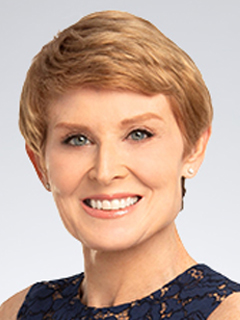Inflation increases, incomes drop & spending tumbles
Consumers caught between higher inflation and weaker incomes.

June 27, 2025
The personal consumption expenditure (PCE) price index rose 0.1%, well in line with expectations. That nudged the year-over-year measure of inflation to 2.3% after hitting a low of 2.2% in April.
The core PCE index, which excludes the volatile energy and food components, rose 0.2%, more than markets expected. That translates to a 2.7% rise in the core PCE from a year ago. The modest acceleration in core inflation was driven by an acceleration in both goods and services. The latter had been on a cooling trend in recent months.
Gains in the price of big-ticket household furnishings were offset by a drop in vehicle prices. Games and toys posted a 1.4% gain; they are among the goods most exposed to tariffs. Household supplies were also hotter at 0.3%.
Service sector inflation was slightly higher than expected, given the CPI and PPI data for the month. A 1.8% gain in legal services helped to buoy those gains. Personal care and clothing services were up 0.6%, while restaurant bills rose by a more moderate 0.3%.
Community food, housing and emergency relief services were up by 1.9%, the fastest monthly increase on record. That reflects the growing stress in low-income households and curbs to grants by the federal government to nonprofits.
The care economy continued to see large price gains. Childcare rose by 0.6%, three times the pace of overall inflation, while homes for the elderly rose by 0.4% and nursing home care increased by 0.3%. Some of those increases reflect a shortage of labor, which has been exacerbated by a drop in the number of foreign-born workers in the labor market. They often fill jobs that native born will not.
Foreign airfares soared, with persistently strong demand for travel abroad. Protests have erupted in some countries against US tourists due to the upward pressure they are exerting on local inflation.
Service sector inflation tends to be more insulated from tariffs than other sectors, except for that which is more dependent on foreign labor. Recent Fed surveys of both the goods and service sectors revealed that contagion in the service sector due to tariffs could be large.
Incomes plummeted, spending tumbles
Personal disposable income fell 0.7% after adjusting for inflation in May, reversing the 0.7% gain of April. A rush by baby boomers to tap their Social Security benefits before they might be cut accounted for the outsized April increase. Some three million public sector workers tapped Social Security early in April, which boosted payrolls last month. Retiring public workers received back pay for vacation, sick days and bonuses owed.
The level of real disposable personal incomes is close to that of March when excluding the distortions due to Social Security. That is still weak and worrisome as it is occurring well ahead of the full effects of cuts to federal jobs, grants and the boost to prices associated with tariffs.
Personal consumption expenditures fell 0.3% after adjusting for inflation in May, another miss for financial markets. A nearly 50% drop in motor vehicle and parts sales largely accounted for the weakness. That represents a giveback to the front-running of tariffs in the vehicle sector in late March and early April. However, the weakness in consumer spending was broadly based in both goods and services.
The weakness is especially worrisome given downward revisions to consumer spending in the first quarter, which came in at a barely perceptible 0.5% pace. That is less than half the initial estimates of more than 1% and a small fraction of the 4% annual pace of the fourth quarter.
The saving rate fell to 4.5% in May, its lowest level since March. The saving rate remains historically low and provides little cushion for tariffs that are expected to hit in full force in the second half of the year.
The latter (inflation) has left the Federal Reserve uncomfortably sidelined until it can gain more clarity on the bump to inflation triggered by tariffs.

Diane Swonk
KPMG Chief Economist
Bottom Line
The PCE report was disappointing on multiple fronts, suggesting the consumer is feeling stressed amidst weaker incomes and accelerating inflation. The latter has left the Federal Reserve uncomfortably sidelined until it can gain more clarity on the bump to inflation triggered by tariffs. The bulk of those effects are not expected to be clear until the summer, which is why the majority of participants at the Fed’s June meeting did not expect a rate cut until September.
Explore more

Quiet before the storm
Inflation cooled but not enough to get consumers to open up their pocketbooks.

KPMG Economics
A source for unbiased economic intelligence to help improve strategic decision-making.

Narrowly averting recession: Decoupling, de-escalation and weathering storms
Business investment slackens.
Meet our team

Subscribe to insights from KPMG Economics
KPMG Economics distributes a wide selection of insight and analysis to help businesses make informed decisions.